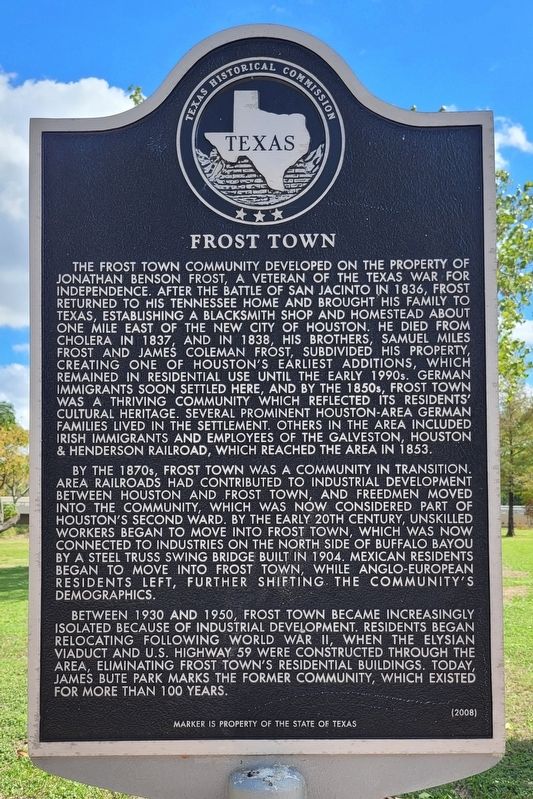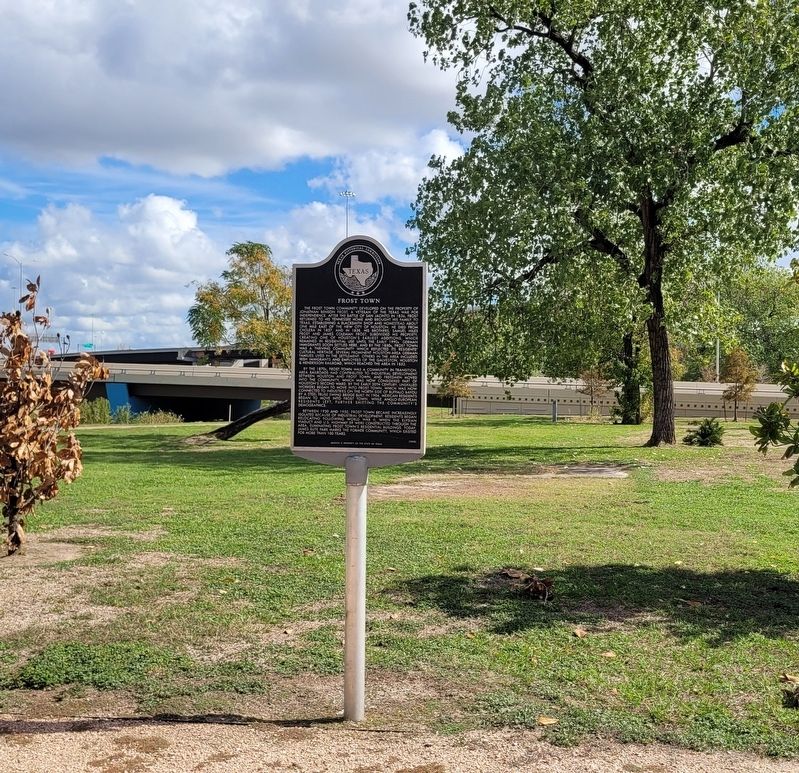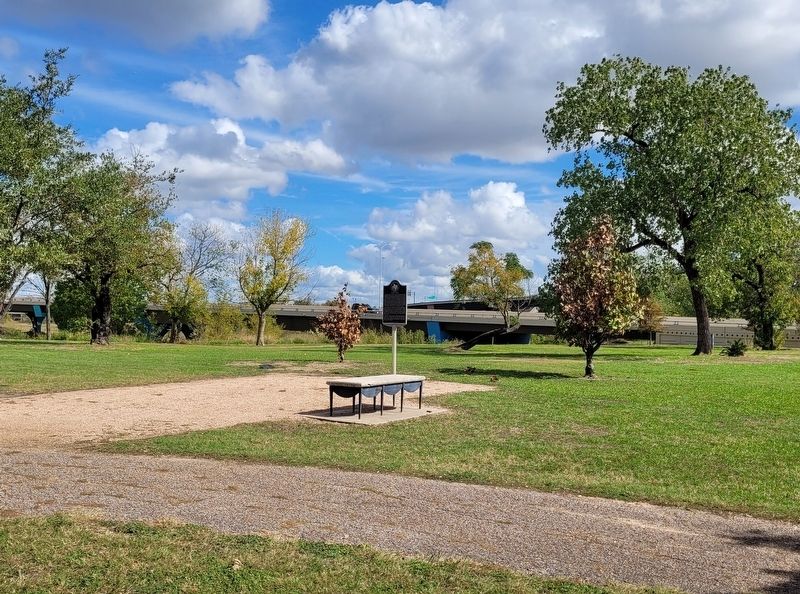Downtown Houston in Harris County, Texas — The American South (West South Central)
Frost Town
By the 1870s, Frost Town was a community in transition. Area railroads had contributed to industrial development between Houston and Frost Town, and Freedmen moved into the community, which was now considered part of Houston's Second Ward. By the early 20th century, unskilled workers began to move into Frost Town, which was now connected to industries on the north side of Buffalo Bayou by a steel truss swing bridge built in 1904. Mexican residents began to move into Frost Town, while Anglo-European residents left, further shifting the community's demographics.
Between 1930 and 1950, Frost Town became increasingly isolated because of industrial development. Residents began relocating following World War II, when the Elysian Viaduct and U.S. Highway 59 were constructed through the area, eliminating Frost Town's residential buildings. Today, James Bute Park marks the former community, which existed for more than 100 years.
Erected 2008 by Texas Historical Commission. (Marker Number 15497.)
Topics. This historical marker is listed in these topic lists: African Americans • Hispanic Americans • Railroads & Streetcars • Settlements & Settlers. A significant historical year for this entry is 1836.
Location. 29° 45.872′ N, 95° 21.106′ W. Marker is in Houston, Texas, in Harris County. It is in Downtown Houston. Marker is on McKee Street, 0.1 miles north of Elysian Street, on the right when traveling north. The marker is located in the western section of the James Bute Park. Touch for map. Marker is in this post office area: Houston TX 77002, United States of America. Touch for directions.
Other nearby markers. At least 8 other markers are within walking distance of this marker. El Barrio del Alacrán (about 500 feet away, measured in a direct line); Myers-Spalti Manufacturing Plant (approx. 0.4 miles away); Merchants and Manufacturers Building (approx. half a mile away); Founding of Harris County (approx. half a mile away); Harris County (approx. half a mile away); Site of Confederate Prison Compound (approx. half a mile away); Pillot Building (approx. half a mile away); Harris County 1910 Courthouse (approx. half a mile away). Touch for a list and map of all markers in Houston.
Also see . . . Frostown, TX. Texas State Historical Association (TSHA)
Frostown (Frost-Town), an early settlement in what is now the city of Houston, was named for the Frost family, who arrived in the 1830s. It was located on Buffalo Bayou in Harrisburg (now Harris) County eight miles upstream from Harrisburg and several blocks east of the conjunction of White Oak Bayou and Buffalo Bayou, west of present U.S. Highway 59. In 1822 the area was settled by the Wilkins family, Dr. James A. E. Phelps and his wife, Rosalie A. Yerby, Stephen Holston, John Austin, and others. Austin received a two-league survey in 1824 from the Spanish government under the supervision of Stephen F. Austin. The 1826 census of Austin's colony taken by the Spanish government listed about twenty inhabitants, mainly farmers and stockraisers. Between the late 1820s and the 1840s, Germans began settling in the area, and the settlement was called simultaneously Germantown and Frostown.(Submitted on November 9, 2023, by James Hulse of Medina, Texas.)
Credits. This page was last revised on November 9, 2023. It was originally submitted on November 8, 2023, by James Hulse of Medina, Texas. This page has been viewed 59 times since then and 15 times this year. Photos: 1, 2, 3. submitted on November 9, 2023, by James Hulse of Medina, Texas.


